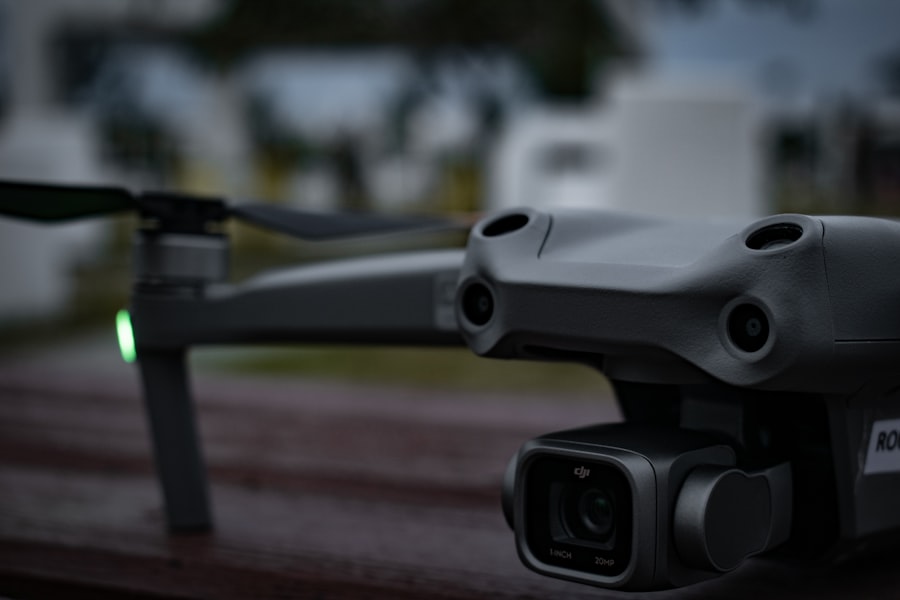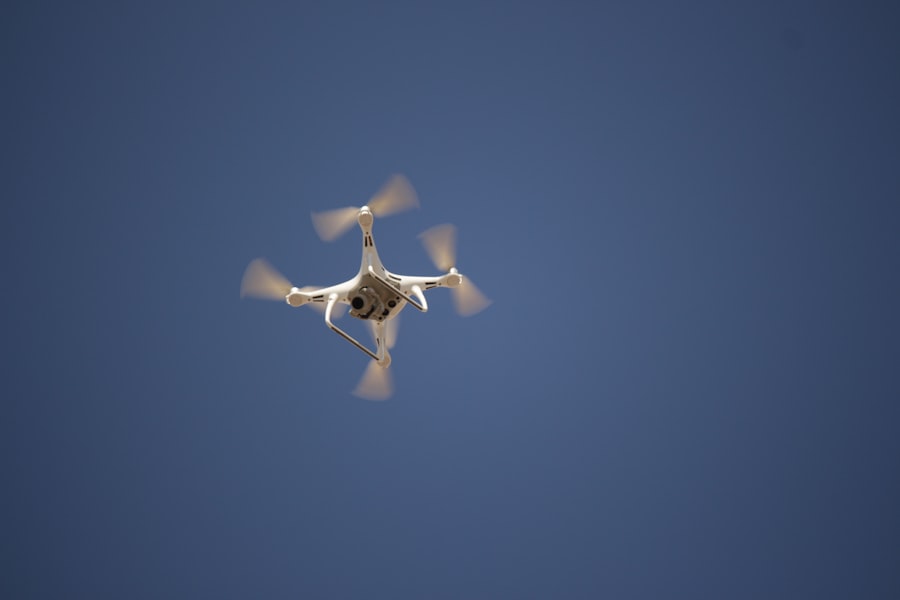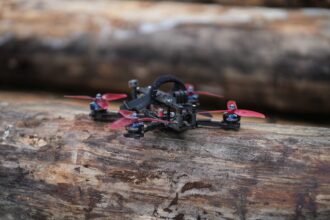In recent years, the proliferation of drones has transformed various sectors, from commercial delivery services to military operations. However, this rapid advancement has also introduced significant security challenges. As drones become more accessible and sophisticated, the need for advanced drone defense systems has become paramount.
These systems are designed to detect, track, and neutralize unauthorized or hostile drones, ensuring the safety of critical infrastructure, public events, and national security. The evolution of drone technology necessitates a corresponding evolution in defense strategies, leading to the development of innovative countermeasures that can effectively address the diverse threats posed by unmanned aerial vehicles (UAVs). The landscape of drone defense is complex and multifaceted, requiring a comprehensive understanding of the various types of drones and their capabilities.
As the technology continues to advance, so too do the methods employed by those seeking to exploit it for malicious purposes. This article delves into the intricacies of drone defense, exploring the current challenges faced by security forces, the emerging technologies that promise to enhance defense capabilities, and the legal and ethical considerations that accompany these advancements. By examining these elements, one can gain a clearer picture of the future of drone defense and the strategies that will shape it.
Key Takeaways
- Advanced drone defense requires a multi-faceted approach to effectively counter the evolving capabilities of drones.
- Different types of drones pose varying threats, from surveillance to weaponized capabilities, requiring a comprehensive understanding of their capabilities.
- Current challenges in drone defense include the difficulty in detecting and neutralizing small, agile, and low-flying drones.
- Emerging technologies such as AI, machine learning, and directed energy weapons offer promising advancements in drone defense countermeasures.
- Integrating radar, RF solutions, jamming, spoofing, directed energy weapons, kinetic solutions, and autonomous defense systems is crucial for comprehensive drone defense.
Understanding the Threat: Types of Drones and Their Capabilities
Drones come in various shapes and sizes, each designed for specific purposes. Commercial drones, often used for photography or delivery services, are typically equipped with high-resolution cameras and GPS navigation systems. In contrast, military drones are engineered for surveillance, reconnaissance, and combat operations.
These UAVs can carry advanced payloads, including missiles and surveillance equipment, making them formidable tools in modern warfare. Additionally, there are hobbyist drones that, while less sophisticated, can still pose significant risks when operated irresponsibly or maliciously. The capabilities of these drones vary widely.
Some are designed for long-range flights with extended battery life, while others prioritize agility and speed. The advent of autonomous drones has further complicated the threat landscape; these UAVs can operate independently using artificial intelligence to navigate and execute missions without human intervention. This autonomy allows for rapid deployment and adaptability in dynamic environments, making them particularly challenging to counter.
Understanding these diverse capabilities is crucial for developing effective defense strategies that can address the unique threats posed by different types of drones.
Current Challenges in Drone Defense

One of the primary challenges in drone defense is the sheer volume of drones in operation today. With millions of commercial and recreational drones in use worldwide, distinguishing between benign and malicious actors becomes increasingly difficult. Security forces must develop systems capable of identifying threats in real-time while minimizing false positives that could lead to unnecessary panic or disruption.
This challenge is compounded by the fact that many drones can be operated from significant distances, making it difficult to trace their origins or intentions. Another significant challenge is the rapid pace of technological advancement in drone design and capabilities. As manufacturers continue to innovate, new features such as enhanced stealth technology and improved communication systems emerge, making it harder for existing defense mechanisms to keep up.
Additionally, the low cost and accessibility of drones mean that even individuals with limited technical expertise can acquire and operate them for nefarious purposes. This democratization of drone technology presents a unique challenge for law enforcement and military agencies tasked with maintaining public safety.
Next Generation Countermeasures: A Look at Emerging Technologies
| Technology | Advantages | Challenges |
|---|---|---|
| Artificial Intelligence | Real-time threat detection, automation of responses | Complex implementation, potential for false positives |
| Blockchain | Data integrity, decentralized security | Scalability, regulatory concerns |
| Quantum Computing | Advanced cryptography, faster data processing | Immature technology, high cost |
As the threats posed by drones evolve, so too do the countermeasures designed to neutralize them. Emerging technologies are paving the way for next-generation drone defense systems that promise to enhance detection, tracking, and neutralization capabilities. One such technology is advanced sensor systems that utilize artificial intelligence to analyze data from multiple sources in real-time.
These systems can differentiate between various types of drones and assess their potential threat levels more accurately than traditional methods. Moreover, advancements in machine learning algorithms enable these systems to adapt over time, improving their effectiveness as they learn from previous encounters with drones. This adaptability is crucial in a landscape where drone technology is constantly changing.
Additionally, researchers are exploring the integration of various countermeasure technologies into a unified system that can respond dynamically to different types of threats. This holistic approach aims to create a more robust defense framework capable of addressing the complexities of modern drone warfare.
Advanced Detection Systems: Radar and Radio Frequency (RF) Solutions
Detection is the first line of defense against unauthorized drones. Advanced radar systems have been developed to enhance situational awareness by providing real-time tracking of aerial objects within a designated airspace. These radar systems can detect drones at varying altitudes and distances, allowing security personnel to respond swiftly to potential threats.
Furthermore, advancements in radar technology have led to improved resolution and accuracy, enabling operators to distinguish between different types of aerial vehicles. In addition to radar solutions, radio frequency (RF) detection systems play a crucial role in identifying drone activity. These systems monitor RF signals emitted by drones during operation, allowing for the detection of both commercial and custom-built UAVs.
By analyzing these signals, security forces can determine the location of a drone’s operator and potentially disrupt their communication link. The combination of radar and RF detection systems provides a comprehensive approach to monitoring airspace and identifying potential threats before they escalate.
Jamming and Spoofing Techniques: Disrupting Drone Communication and Navigation

Once a drone has been detected, disrupting its communication and navigation systems becomes essential for neutralizing potential threats. Jamming techniques involve emitting signals on the same frequency as a drone’s control system, effectively disrupting its ability to receive commands from its operator. This method can force a drone to land or return to its point of origin, thereby neutralizing its threat without physical destruction.
Spoofing techniques take this concept a step further by sending false signals to a drone’s navigation system. By mimicking legitimate GPS signals, security forces can redirect a drone away from sensitive areas or into safe zones where it can be safely recovered or monitored. Both jamming and spoofing techniques require sophisticated technology and expertise but offer effective means of countering unauthorized drone activity without resorting to kinetic measures.
Directed Energy Weapons: Laser and Microwave Systems for Drone Defense
Directed energy weapons (DEWs) represent a cutting-edge approach to drone defense that leverages focused energy beams to disable or destroy UAVs. Laser systems are among the most promising DEWs; they can deliver precise energy strikes capable of damaging a drone’s components or even causing it to crash. The advantage of laser systems lies in their speed and accuracy; they can engage multiple targets rapidly without the collateral damage associated with traditional munitions.
Microwave systems also offer unique capabilities in drone defense. These systems emit high-frequency microwave energy that can disrupt electronic components within a drone, rendering it inoperable without physical destruction. The ability to neutralize drones at a distance while minimizing collateral damage makes directed energy weapons an attractive option for military and security applications alike.
As research continues into improving DEW technology, these systems are poised to play an increasingly vital role in advanced drone defense strategies.
Kinetic Solutions: Interception and Neutralization of Drones
While non-kinetic solutions such as jamming and directed energy weapons offer effective means of countering drones, kinetic solutions remain an essential component of comprehensive drone defense strategies. Kinetic solutions involve physical interception methods designed to neutralize drones through direct engagement. This can include using projectiles such as missiles or specialized nets designed to capture UAVs mid-flight.
The use of kinetic solutions raises important considerations regarding safety and collateral damage; therefore, precision targeting is crucial when deploying these measures in populated areas or near critical infrastructure. Advances in targeting technology have improved the accuracy of kinetic solutions, allowing for more effective engagement with minimal risk to bystanders or surrounding property.
Autonomous Defense Systems: AI and Machine Learning in Drone Defense
The integration of artificial intelligence (AI) and machine learning into drone defense systems represents a significant leap forward in addressing the complexities of modern aerial threats. Autonomous defense systems equipped with AI algorithms can analyze vast amounts of data from various sensors in real-time, enabling them to make rapid decisions regarding threat assessment and response strategies without human intervention. These autonomous systems can learn from previous encounters with drones, continuously improving their effectiveness over time.
By leveraging machine learning techniques, they can adapt to new tactics employed by adversaries and refine their detection and neutralization methods accordingly. The potential for AI-driven autonomous defense systems to operate independently enhances situational awareness while reducing the burden on human operators during high-stress scenarios.
Legal and Ethical Considerations in Advanced Drone Defense
As advanced drone defense technologies continue to develop, legal and ethical considerations become increasingly important. The deployment of counter-drone measures raises questions about privacy rights, civil liberties, and the potential for misuse by authorities or private entities. Striking a balance between ensuring public safety and protecting individual rights is essential as governments navigate this complex landscape.
Moreover, international laws governing airspace sovereignty must be considered when implementing drone defense measures. The use of kinetic solutions or directed energy weapons could have far-reaching implications if not carefully regulated within established legal frameworks. Engaging stakeholders from various sectors—including government agencies, legal experts, and civil society—will be crucial in developing comprehensive policies that address these concerns while promoting effective drone defense strategies.
The Future of Drone Defense: Integrating Multiple Countermeasures for Comprehensive Protection
Looking ahead, the future of drone defense lies in integrating multiple countermeasures into cohesive systems capable of addressing diverse threats effectively. A multi-layered approach that combines detection technologies with jamming techniques, directed energy weapons, and kinetic solutions will provide comprehensive protection against unauthorized UAVs. This integration will require collaboration among various stakeholders—government agencies, private sector innovators, and academic researchers—to develop interoperable systems that can adapt to evolving threats while ensuring compliance with legal frameworks.
As technology continues to advance at an unprecedented pace, fostering innovation while prioritizing safety will be essential in shaping the future landscape of advanced drone defense. In conclusion, as drones become increasingly prevalent across various sectors, the need for advanced drone defense mechanisms has never been more critical. By understanding the diverse threats posed by different types of UAVs and leveraging emerging technologies such as AI-driven autonomous systems and directed energy weapons, security forces can develop robust strategies capable of safeguarding public safety while navigating complex legal and ethical considerations.
The future promises exciting advancements in this field as stakeholders work together towards comprehensive protection against evolving aerial threats.
In the rapidly evolving field of drone technology, the development of next-generation drone countermeasures is becoming increasingly crucial. As drones become more sophisticated, so too must the methods to counteract potential threats they pose. An insightful article that delves into the intricacies of this topic can be found on In The War Room’s website. This article explores various strategies and technologies being developed to effectively neutralize unauthorized drone activities. For a deeper understanding of these advancements, you can read more about it




